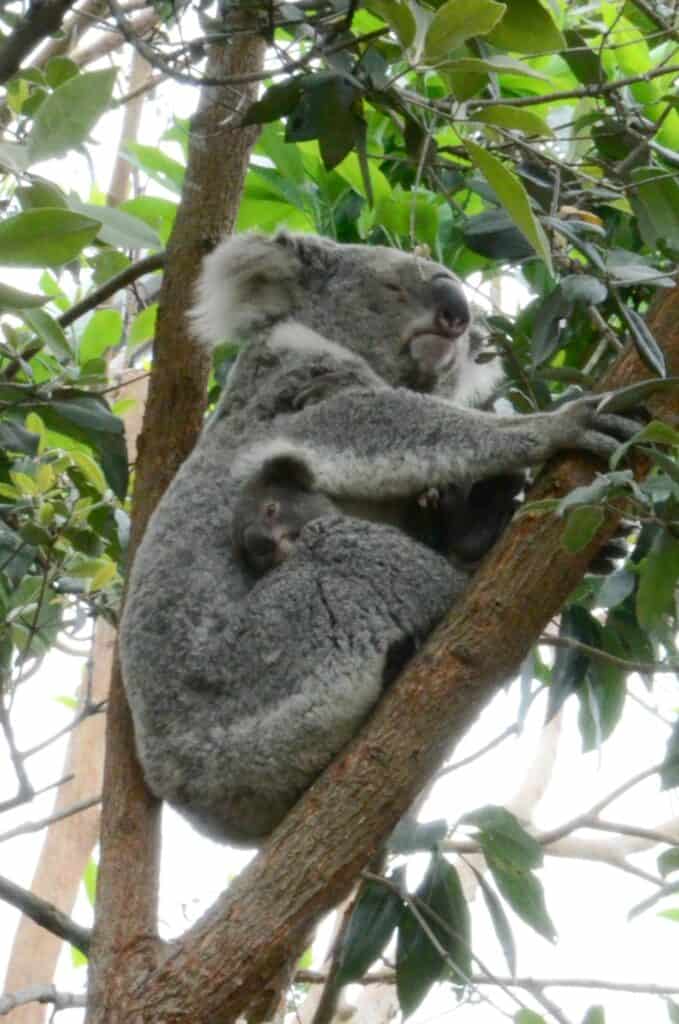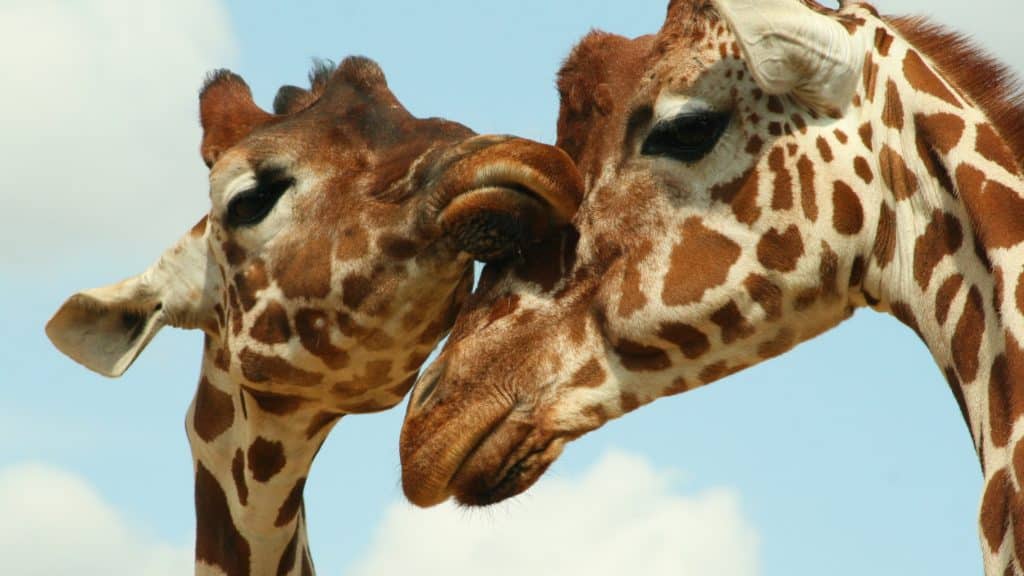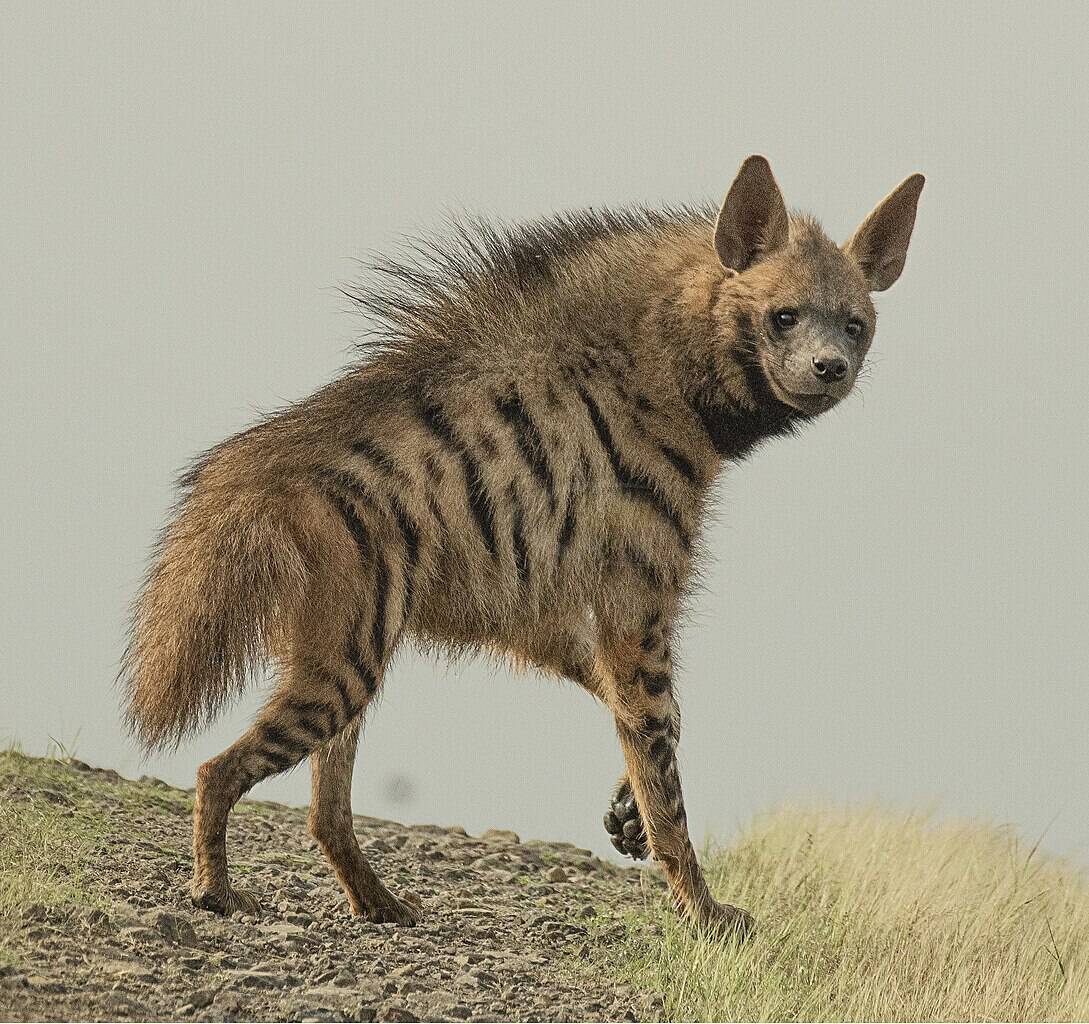Looking for Animals with Down Syndrome? Welcome to the Top 10 animals with down syndrome. While people are the main living animals who can foster down disorder, animals can foster fundamentally the same as infection to down condition.
Down condition is one of a kind to just human chromosomes, be that as it may, we share comparative chromosomes with different creatures, and they can have comparable psychological sicknesses to what people can have.
Click below to jump to any section on the top 10 animals with down syndrome.
#1 Down Syndrome in Monkeys
- Kingdom: Animalia
- Order: Primates
- Class: Mammalia
- Phylum: Chordata
- Infraorder: Simiiformes
Kanako was brought into the world in imprisonment at the Kumamoto Sanctuary and fostered a few strange qualities that put her aside from different chimps. Her eyes, for instance, were crossed, and she created waterfalls at one year old.
She became visually impaired at seven years old. Furthermore, she likewise showed some feeling anomalies and immature teeth. Ongoing tests later uncovered that Kanako has a third duplicate of chromosome 22, also called trisomy 22.
These qualities all mirror Down disorder in people, a hereditary condition brought about by the presence of all or part of an additional chromosome 21. A complete additional duplicate of chromosome 21 is frequently alluded to as trisomy 21.
Patients with Down disorder display some craniofacial dysmorphology, for example, by and large, decreased skull size, level head, epicanthal folds, level nasal extension, and open mouth. Also, perhaps the mind is the most impacted organ in Down’s condition. Down condition patients generally present with a more modest cerebrum size, explicitly a more modest cerebellum and hippocampus.
This can bring about a scope of mental disabilities, like learning and memory shortfalls. Truth be told, trisomy 21 is the most incessant hereditary reason for mental impediments.
The remainder of the body can likewise be irritated because of the measurement awkwardness of an additional 21 chromosomes, including clubbed digits, bent pinkie, wide 1-2 toe hole, and abbreviated height. Down condition patients additionally show an expanded occurrence of inborn coronary illness and Hirschsprung’s sickness.
Read on more for info on the Top 10 animals with down syndrome.
Where can one find down syndrome in Monkey?
It was found in Kodaira, Japan.
#2 Kenny the Tiger
- Scientific name: Panthera tigris
- Lifespan: 8 – 10 years
- Speed: 49 – 65 km/h
- Conservation status: Endangered (Population decreasing)
- Order: Carnivora
- Mass: 90 – 310 kg
In truth, Kenny’s deformations are the consequence of ages of inbreeding as opposed to the sort of chromosomal transformation that records for Down disorder in people. Since white tigers like Kenny are so uncommon yet so wanted for their unique fur, most that are alive today are the consequence of forceful rearing projects that utilize inbreeding between white tigers to attempt to keep the white fur attribute alive.
Named the ‘ugliest’ giant feline on the planet – Kenny was the result of interbreeding by a creature dealer who needed to make a little fortune.
His folks were siblings, and their babies, except Kenny and a sibling called Willie, were stillborn or passed on upon entering the world.
The reproducer guaranteed Kenny’s face was distorted because he continued to crush his face into a wall. He said he hadn’t killed the fledgling upon entering the world since his child; however the infant was “excessively charming”. Indeed, Kenny had hereditary facial deformations because of inbreeding, not chromosome changes.
White tigers are very uncommon. Anyway, they are lovely to the point that zoos and fur dealers the same need to save them for their fame. This tragically leads to forceful rearing projects that depend on inbreeding to continue to create tigers with white fur. Due to the lamentable ailments coming about because of inbreeding that can be unsafe to the creature, the American Zoological Association restricted this training in 2011.
Where can one find down syndrome in tigers?
Turpentine Creek Wildlife Reserve in Eureka Springs, Arkansas rescued Kenny.
#3 Otto the Kitten
About
- Lifespan: 12 – 18 years (Domesticated)
- Gestation period: 58 – 67 days
- Family: Felidae
- Order: Carnivora
- Phylum: Chordata
- Kingdom: Animalia
Little Otto the cat became famous online in Turkey after a vet determined him to have Down condition. As indicated by Otto’s veterinarian, the state of the feline’s face and the design of his temple all highlight the hereditary problem. In any case, most cat specialists concur that Down disorder doesn’t exist in felines. However, they could experience the ill effects of another hereditary circumstance, which is the same.
The down disorder is the duplicate of the 21st chromosome in people. Felines have 19 chromosomes, so they can’t have Down disorder but can have hereditary changes. Unfortunately, at only over two months, Otto began spasming wildly and was hurried to the emergency clinic and taken into escalated care. Sadly, the vets couldn’t save him, and he died from a cardiovascular breakdown.
Read on more for info on the Top 10 animals with down syndrome.
Where can one find down syndrome in Kitten?
It was found in Turkey.
#4 Koala

About
- Scientific name: Ursidae
- Family: Ursidae
- Order: Carnivora
- Kingdom: Animalia
The koala is a notorious Australian creature. Frequently referred to the koala as “bear,” this tree-climbing creature is a marsupial — a vertebrate with a pocket for improving posterity. However, koalas look fluffy; their hair is more similar to the coarse fleece of a sheep.
They have two contradicting thumbs on their hands, and their feet and hands have harsh cushions and paws to take hold of branches. They have two toes, melded, on their feet, which they use to brush their fur. The koala is an arboreal herbivorous marsupial local to Australia.
There is a fantasy that Koalas rest a ton since they ‘become inebriated’ on gum leaves. Luckily, this isn’t right! The more significant part of their time is spent resting because it requires a ton of energy to process their harmful, sinewy, low-nourishment diet. Dozing is the most effective way to monitor energy. The child of a marsupial is known as a joey.
Read on more for info on the Top 10 animals with down syndrome.
Where can one find down syndrome in bears?
It was found in Australia.
#5 Beluga Whale

About
- Mass: 1,400 kg
- Lifespan: 35 – 50 years
- Scientific name: Delphinapterus leucas
- Order: Artiodactyla
- Family: Monodontidae
- Phylum: Chordata
- Kingdom: Animalia
Beluga whales are known for their white tone and scope of vocal sounds, acquiring them the title of “canary of the ocean.” They are amiable creatures, shaping gatherings to chase, move, and cooperate.
Beluga whales are tracked down universally throughout the Arctic and sub-Arctic waters in the United States and the province of Alaska. They are at home along seaside coves and bays and can move among salt and freshwater.
A thick layer of fat called fat and toughness assists them with living in the freezing waters of the icy and subarctic climate. Belugas likewise miss the mark on the dorsal blade so they can swim with ice. Beluga whales are powerless against numerous stressors and dangers, including contamination, environment debasement, provocation, connections with business and sporting fisheries, oil and gas investigation, infection, predation from executioner whales, and different kinds of human aggravation.
Read on more for info on the Top 10 animals with down syndrome.
Where can one find down syndrome in the beluga whales?
It is found in Alaska.
#6 Down Syndrome in Giraffes

- Species: G. camelopardalis
- Eats: Acacia
- Family: Giraffidae
- Class: Mammalia
- Order: Artiodactyla
While generally known as the creature with the longest legs, it may be excellent for seeing a bantam giraffe, yet they exist. In any case, these creatures don’t have Down conditions. They have a hereditary problem called skeletal dysplasia that prompts unusually molded bones in their spine, arms, legs, and head. Another condition in giraffes is birth asphyxia, where the child has oxygen cut off and doesn’t grow ultimately.
Read on more for info on the Top 10 animals with down syndrome.
Where can one find down syndrome in giraffes?
It is found in the USA.
#7 Down Syndrome in Dogs
About
- Lifespan: 10 – 13 years
- Gestation period: 58 – 68 days
- Family: Canidae
- Order: Carnivora
- Phylum: Chordata
- Kingdom: Animalia
Having a large tongue is a common symptom of Down syndrome and also a common symptom of macroglossia that can occur in dogs. Macroglossia is typically the result of enlarged cells or muscle tension that leads to dogs having abnormally large tongues that constantly hang out of their mouths.
Their tongues can lead to breathing difficulties and reduced range of motion. Although it can be easy to assume a dog with macroglossia has Down syndrome, the condition usually occurs for other reasons.
Examples include an allergic reaction or exposure to diseases such as hypothyroidism. Most of us are now all about Down’s disorder and its signs in people. Many of us keep thinking about whether canines likewise can be impacted by Down condition. The response is indistinct.
Canines do have hereditary imperfections, yet they have not been associated with the very piece of rehashed hereditary material that causes Down disorder in people. However, a few canines have the expansive countenances, slow turn of events, and actual feebleness we partner with Down disorder in people.
The phones of canines, people, and different creatures keep their hereditary material in matched packs called chromosomes. People have 23 sets of chromosomes. An additional chromosome, past the 46 expected, as a rule, delivers an undeveloped organism that can’t create and develop.
Yet, because of the more modest 21st chromosome, an additional duplicate of part or all of the chromosome known as “trisomy 21” can yield an undeveloped organism that gets by and forms into a child yet has numerous uncommon highlights.
Their tongues can lead to breathing difficulties and a reduced range of motion. Although it can be easy to assume a dog with macroglossia has Down syndrome, the condition usually occurs for other reasons. Examples include an allergic reaction or exposure to diseases such as hypothyroidism. Most of us are now all about Down’s disorder and its signs in people.
Many of us keep thinking about whether canines likewise can be impacted by Down condition. The response is indistinct. Canines have hereditary imperfections, yet they have not been associated with the same piece of rehashed hereditary material that causes Down disorder.
Read on more for info on the Top 10 animals with down syndrome.
Where can one find down syndrome in dogs?
It can be found anywhere as an abnormality.
#8 Down Syndrome in Mice
About
- Scientific name: Rattus
- Order: Rodentia
- Family: Muridae
- Kingdom: Animalia
- Phylum: Chordata
Analysts have found that mice can encounter chromosomal imperfections. They can foster an extra chromosome 16 that causes side effects like Down disorder. Be that as it may, it is never found in wild mouse populaces since the children with this deformity usually bite the dust before they are conceived.
Scientists know about the chance since they hereditarily made the circumstances in research center mice to concentrate on them. A mouse is a little rat with a sharp nose, fuzzy round body, enormous ears and a long, frequently bald tail.
Many sorts of mice are isolated into subfamilies of either Old World or New World species. Everyday assortments incorporate deer mice, house mice, field mice, wood mice, dormouse, barbed mouse, and zebra mouse.
However, specific individuals discuss mice and rodents as though they were precisely the same thing; they are various kinds of creatures in the rat family. Rodents, for the most part are more significant than mice, and they can be uncovered, textured, and chamber molded.
Read on more for info on the Top 10 animals with down syndrome.
Where can one find down syndrome in mice?
They can be found in pit holes, grasses, garbage areas, etc.
#9 Hyenas

Spotted hyenas have excellent hearing and sharp visual perception around evening time. They are quick and can run for significant distances without tiring. Packs cooperate successfully to confine a group creature, sometimes sick or decrepit, and seek after it until the very end.
The victors frequently quarrel about the crown jewels, among themselves or with other strong creatures like lions. Spotted hyenas are very vocal and make a wide assortment of sounds, including the “chuckling” that has been related to their name for some time. Spotted hyenas are the biggest of three hyena species. Brown and striped hyenas are the other two. Even though hyenas seem like canines, they are all the more firmly connected with felines.
They live all through much of Africa and eastwards through Arabia to India. Spotted hyenas live respectively in huge gatherings called groups that might incorporate up 80 people and are driven by females. The victors frequently quarrel about the crown jewels, among themselves or with other strong creatures like lions.
Spotted hyenas are very vocal and make a wide assortment of sounds, including the “chuckling” that has been related to their name for some time. Spotted hyenas are the biggest of three hyena species.
Read on more for info on the Top 10 animals with down syndrome.
Where can one find down syndrome in hyenas?
They are primarily found in Africa.
#10 Down Syndrome in Elephants

- Kingdom: Animalia
- Phylum: Chordata
- Family: Elephantidae
Elephants are the most significant land vertebrates on earth, with immense bodies, huge ears, and long trunks. They use their trunks to get objects, trumpet cautions, welcome various elephants, or suck up water for drinking or washing, among various purposes.
Both male and female African elephants foster tusks, and each individual can either be left-or right-tusked, and the one they use more is typically more unassuming by mileage.
Elephant tusks fill a few necessities. These long teeth can defend the elephant’s trunk, lift and move objects, aggregate food, and strip tree bark. They can, moreover, be used for protection. During drought, elephants even use their tusks to dig openings to find water underground.
Asian elephants contrast more than one manner from their African relatives, with more than ten definite genuine differences between them. For example, Asian elephants’ ears are more unobtrusive and diverged from the colossal fan-shaped ears of the African species. Only a couple of male Asian elephants have tusks, while male and female African elephants foster tusks.
These long teeth can defend the elephant’s trunk, lift and move objects, aggregate food, and strip tree bark. They can, moreover, be used for protection. During drought, elephants even use their tusks to dig openings to find water underground. Asian elephants contrast in more than one manner from their African relatives, with more than ten definite genuine differences between them.
Read on more for info on the Top 10 animals with down syndrome.
Where can one find down syndrome in Elephants?
It can be found in Africa.
Summary of Animals with Down Syndrome
Not all animals can have down jumble, even though they are more likely to experience the adverse effects of genetic problems, and they inherit traits from their human companions.
While it’s not the same virus as down disorder, it might provide the creature with similar visual and mental abilities.
Even though humans are the only living thing that may cause an illness, other organisms can cause a state fundamentally similar to an infection.
If you enjoyed reading about the world’s top 10 most significant animals, look at the top 10 animal encounters in Europe and the top 10 cutest animals in 2022.
Join our Forum for free today!

- These are The 5 Largest Great White Sharks Ever Recorded - July 19, 2024
- The Surprising Benefits of Big Game Hunting - July 18, 2024
- $100k+ Hunting Experiences The Most Expensive Animals to Pursue - July 17, 2024




